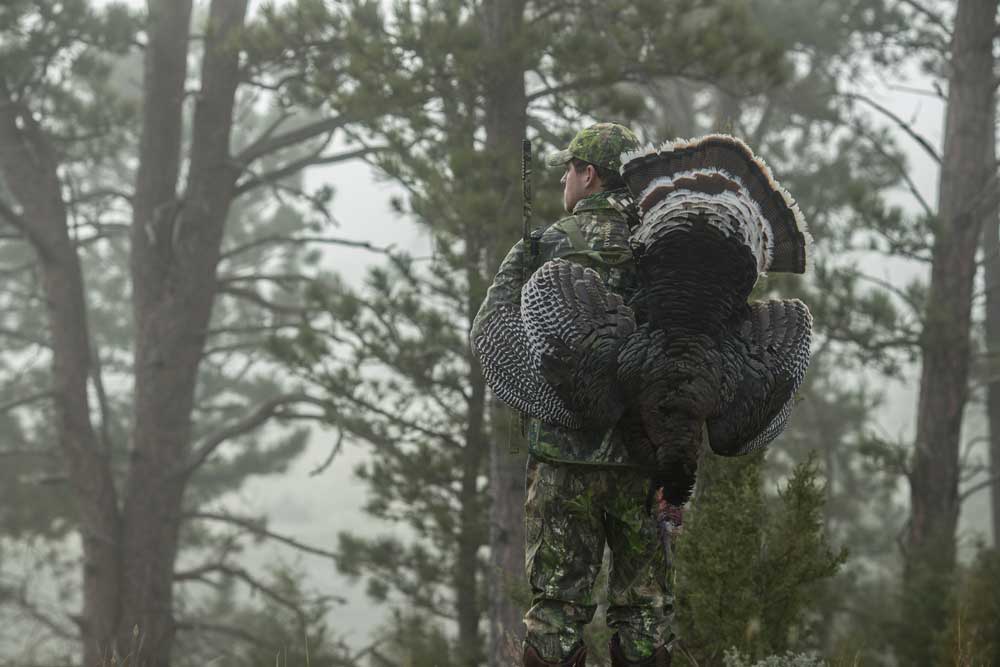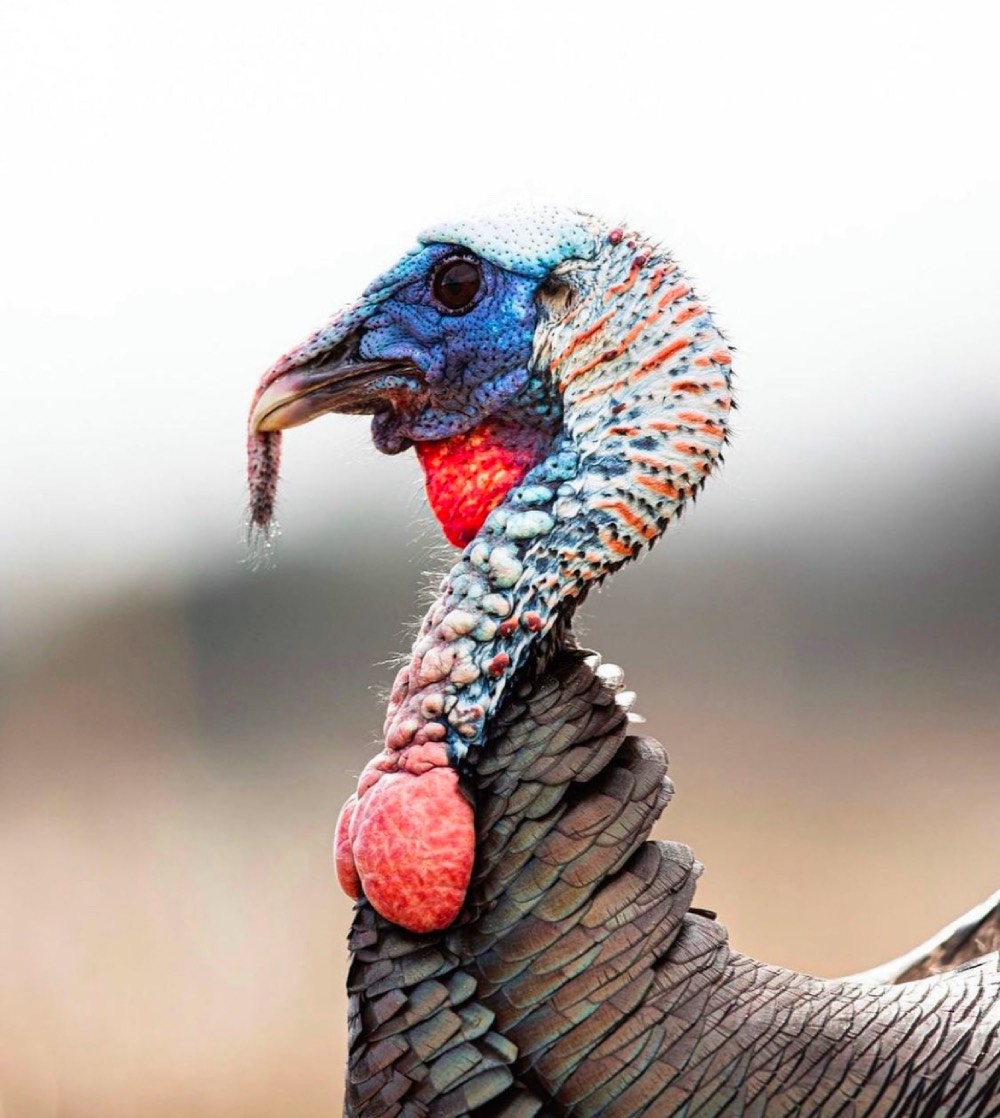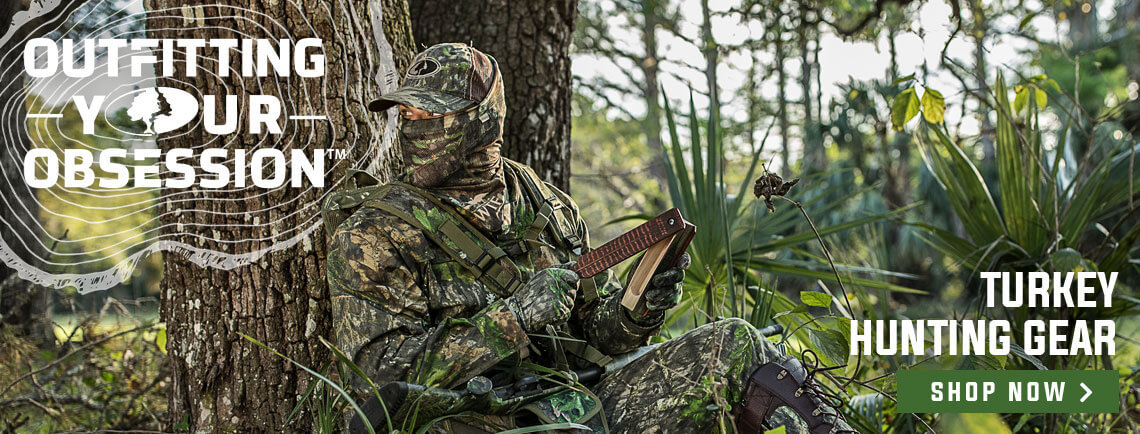Jason Worley
Thirty-five yards and the longbeard had just stepped behind a deadfall. In a handful of strides, he would re-emerge from behind the fallen oak within clear range and would be as good as tagged. I sent forth a soft purr and adjusted my Winchester 1300 slightly to the right. Like a ghost drifting through the air, the gobbler emerged from behind the treetop. Pulling the stock tight to my check, I began to tighten down on the trigger. Just as I was about to send firing pin to primer, the Tom dropped his head, sidestepped once, and with a sharp putt was gone. What happened? What did he see? A phrase from Colonel Tom Kelly’s classic, “Tenth Legion,” ran through my mind as I dropped my head in defeat. The Colonel knowingly states, "He is utterly and wholly suspicious of everything and everybody….Not only does he hold all the good cards, he can read the backs of yours." The old Tom had read my hand and read it well.

This short tale of being bested by the eyesight of a wild turkey is played out hundreds upon hundreds of times each spring. I know it has happened way more often than I care to admit for this hunter. If there is one physical trait that has saved more wild turkeys from being slung over a shoulder, it has to be their unbelievable eyesight. What is it that makes their vision so hard to beat? Surprisingly, with all the research done on wild turkeys, there hasn't been a lot done to answer that question. Still, through that limited research, as well as studies done on other birds and prey species, we can draw some conclusions as to why you just can't beat the eyes of an old gobbler.
It's widely accepted that wild turkeys can see three times sharper than a hunter with 20/20 vision and nearly eight times farther. Turkeys can put together details and movement through that incredible sharpness, often at unbelievable distances. The speed at which they can translate those features into possible danger can be traced back to ages of adaptation as a prey species. Curiosity is not a trait of the wild turkey, and when you couple that with the ability to see so well, you have a game animal that is always on the verge of panic.

Photography by Kerry Wix
Eye position
The position of the eyes on a turkey's head will shed some light on just why they can see things we hunters would have never believed they could detect. The eyes of a wild turkey are situated on the side of its head, which is shared with many prey species. This trait leads to a monocular vision, which doesn't allow for very good depth perception, but it does allow for a wide angle of sight. The wild turkey has a field of vision of about 270 degrees, and with just the slightest turn of the head, it can see nearly 360 degrees around itself. Scientists have learned that for prey species, it is far more critical to see danger approaching from all around than it is to perceive depth as we humans, who possess binocular vision, can see. This lack of depth perception is compensated for with the constant bobbing up and down and twisting of the head in hopes of getting a better feel for how close something may be. As we all know, this is something a wild turkey is constantly doing.
Color
The wild turkey, like most birds, has a strong ability to detect color. A turkey hunter has to look no farther than a gobbler's head to see that color plays a huge role in conveying messages to their fellow flock members, and the ability to see those colors is essential. We have all seen the head of an excited gobbler change colors as its excitement level changes. These color changes are detected by the turkey's retina, which contains seven different types of photoreceptors – one rod cell and six cone cells. The rod cell detects light, and the six cone cells detect color. The retina of a gobbler is one of the most complex of any animal, and within those six cone cells lies that amazing ability to see color. It is also where we find the reason why we should be cautious in how we handle our camo clothing.
Within those cone cells, there lies the ability to see color and the ability to see within the ultraviolet range. This ability to see UV light is often magnified by the detergents we wash our favorite hunting clothing in. Fabric brighteners found in the most common household detergents will often brighten our camo to the point that it’s easier for a gobbler to detect. Our favorite camo will glow with a blue fluorescence in the eye of a wild gobbler if we aren't careful. This ability to detect color and UV light aids the bird in finding food, detecting a mate, and in the case of heavily laundered clothing, detecting hunters. Keep in mind, though; it isn't the detection of one particular color or UV light that will cause a gobbler to take notice; it's the assimilation of those colors into patterns, often unnatural patterns, and how they relate to their environment. Couple that with any unnatural movement, a movement that can be detected at nearly any point around them, and we have an animal whose eyesight is nearly impossible to beat.
Famed poet and outdoor writer of the early twentieth century, Archibald Rutledge, once wrote, "The turkey's eyes are such that he can see a bumblebee turn a somersault on the verge of the horizon." This statement, as far-fetched as it may seem, sums up the wild turkey's ability to see and detect movement like few words ever have. Thankfully, with patterns such as Mossy Oak’s, tried and true Bottomland, and the ever-popular Obsession, along with the careful choice of laundry detergents and a serious dose of "sit still," we’re in much better shape these days than in Rutledge's time when it comes to deceiving the eyes of a wild turkey.































